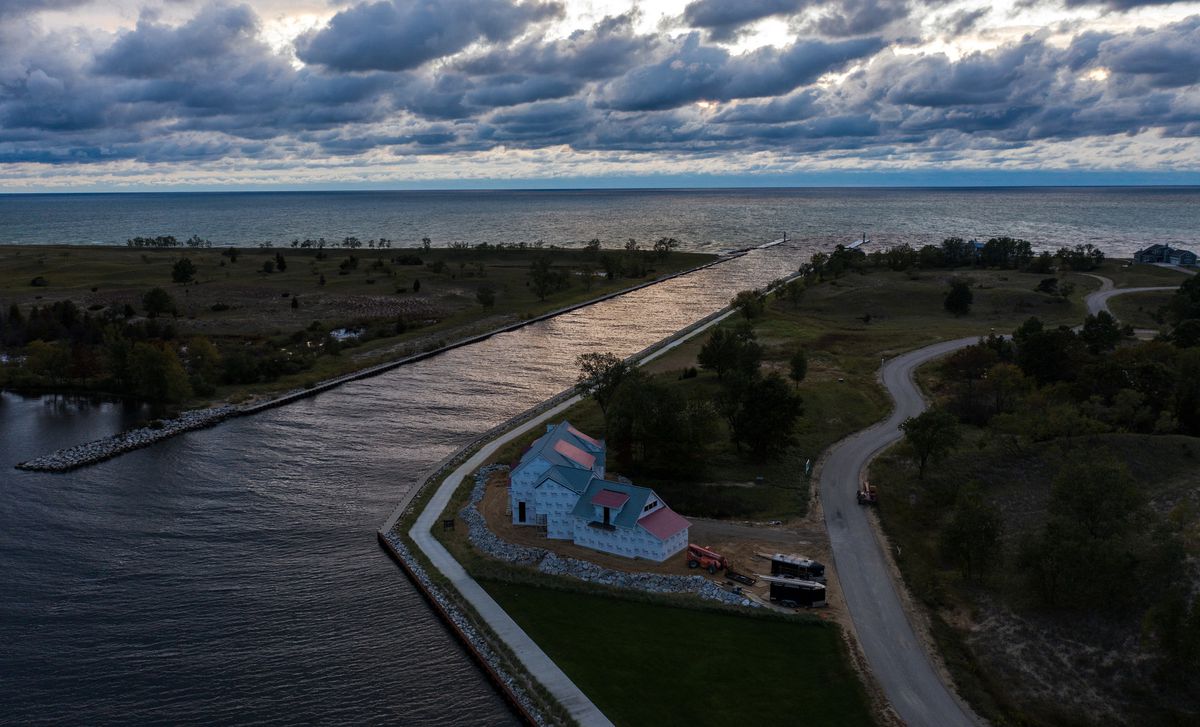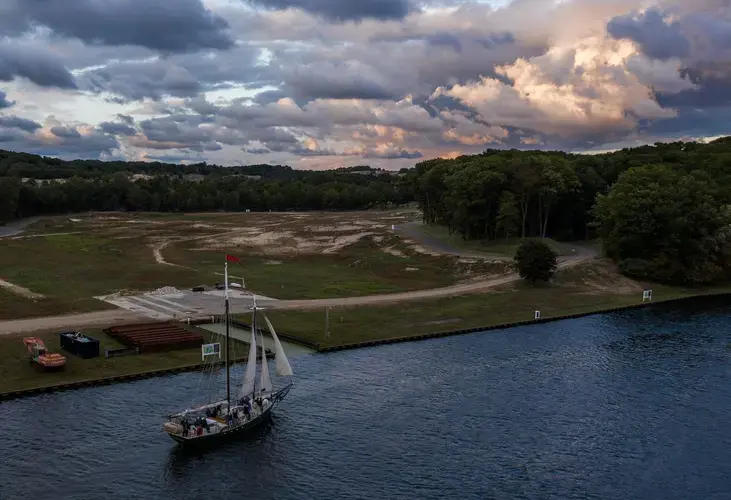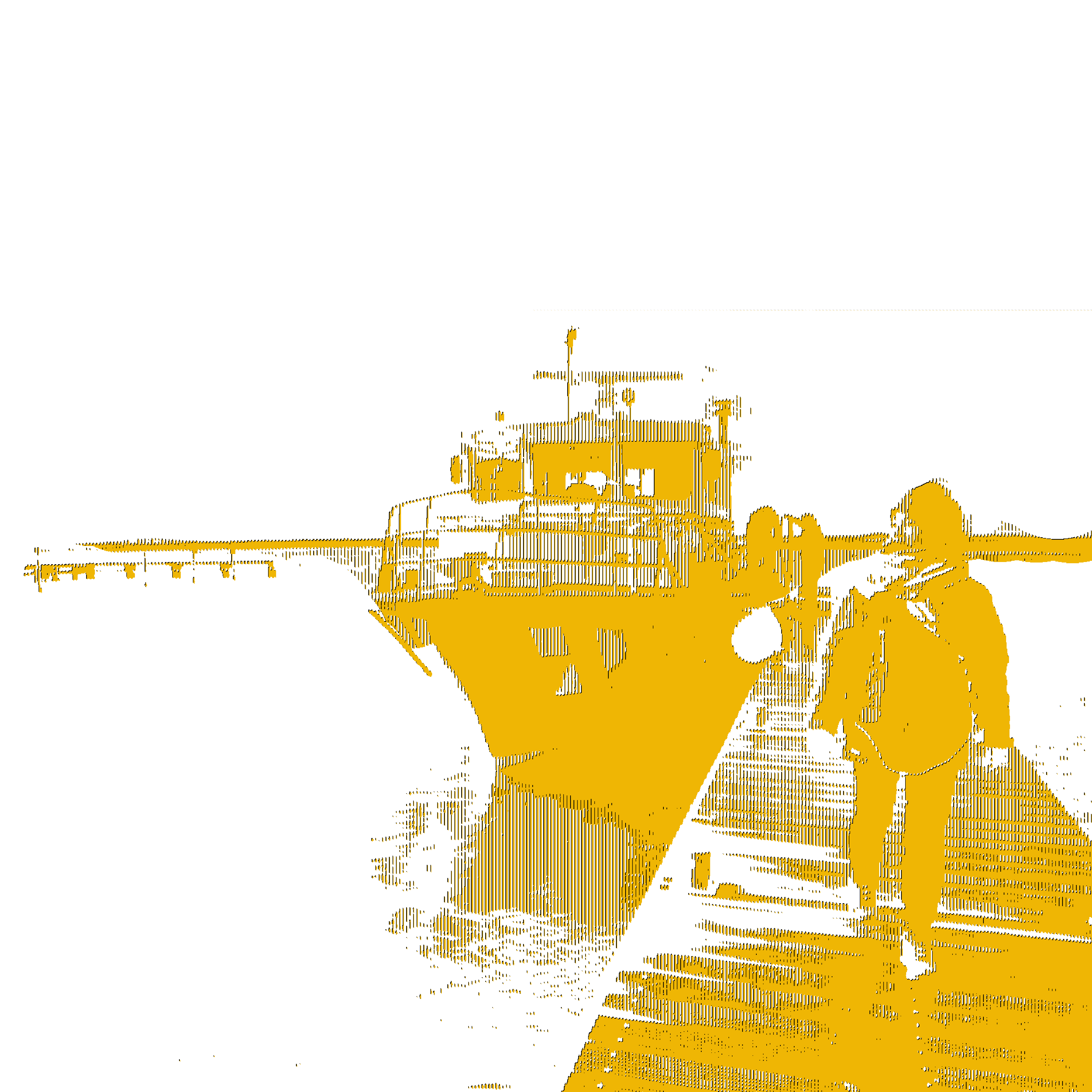
SAUGATUCK, MICHIGAN — The rolling dunes on the northern bank of the Kalamazoo River near Lake Michigan hold a secret.
A small town once stood on the riverbank, where the river bends before ending its journey at the lake. For several decades in the mid-1800s, the village of Singapore was a humming lumber and shipbuilding hub. Residents and sawmill workers processed the plentiful white pine trees of western Michigan, then loaded them onto schooners for Chicago and Milwaukee.
The founders of Singapore had big dreams. They envisioned their town, then located north of present-day Saugatuck on the southwestern Michigan shore, as the next important Midwestern city, rivaling the growing metropolises in Illinois and Wisconsin.

But nature, and economic forces, had other plans.
After the lumber trade waned and a series of fires roared through the area, leading to the destruction of many of Singapore’s houses, the town was abandoned. By 1875, according to Eric Gollannek, executive director of the Saugatuck-Douglas Historical Society, the lumber boom was over, the mills were dismantled and moved to St. Ignace, Michigan, jobs dried up and the village slowly disappeared.
Eventually, what was left of Singapore was buried beneath the sand.
“Michigan’s Pompeii,” Gollannek said. “It’s really compelling.”
As southwest Michigan’s current coastal residents cope with near-historic lake levels and erosion concerns, the story of Singapore is a reminder of the power of nature and how human development can accelerate those forces. In the 19th century, it was fires and deforestation that led to Singapore’s downfall, allowing the sandy dunes to reclaim the land. Today, the forces of climate change, from rising temperatures, fluctuating lake levels and bluff erosion, form the backdrop for shoreline life along Lake Michigan’s coast.
Visitors who venture to the southern section of Saugatuck Dunes State Park, or catch a ride on a boat down the Kalamazoo, will find no sign of the lost town. The site is now mostly dunes and trees, though one housing development is in its infancy and another is proposed, the source of much controversy to locals.
What’s left beneath the sand remains a mystery, Gollannek and others who have written about the site report. Over the years, depending on water levels at the lake, a few old docks and building foundations have been exposed.
Except for a small sign aside one of the dunes near the private housing development, obscured by dune grass, that reads “Singapore located here,” there is no sign that the area was once a small town with a booming lumber trade.
Today’s landscape is a far cry from what the area looked like from the late 1830s through the 1870s. In addition to three or four mills, dozens of houses and the ship docks, Singapore had a school, several saloons and a hotel, said Michelle Church, a doctoral student at Michigan State University who is writing her thesis about Singapore.
A lighthouse was also built at the mouth of the Kalamazoo River in 1837 and 1838, and served to illuminate the lake in the area. But the flow of the river drifted to the north, undercutting the lighthouse foundation and causing it to topple over around 1859, according to the book “The Early History of Saugatuck and Singapore, Michigan 1830-1840,” written by Charles J. Lorenz.
At its peak, as many as 300 people lived in Singapore. Church pinpoints the town’s life span as 1837 through 1875.

“The town was gone, so there was nothing left to save,” Church said. “There was nothing to stop the blowing sand. The natural resources were depleted and that is what caused the whole town being buried by the sand dune.”
Singapore, despite its founders’ big ideas, never incorporated as a town.
With no trees and vegetation to anchor the dunes, Church said, the sand “moved in and moved in pretty quickly.”
When Church tells family and friends what she’s working on, she said, they cannot believe it.
“They actually can’t believe,” Church said, “there is a town buried under a sand dune.”







